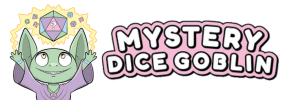Jungle Bundle: Battle Maps & Sounds
31 DnD Ship Tokens - Downloadable
Battlemap & Sounds Bundle
DnD Winter Battle Map Bundle
DnD City Bundle: Battle Maps & Sounds
Dock DnD Battle Maps & Sounds
DnD Ship Battle Map Bundle
DnD Battle Map Base Bundle: Battle Maps & Sounds
DnD Wagon Token - Downloadable
Castle Battle Map Bundle
Shop Bundle: dnd town map
Winter Battle Map Bundle
About our Metal Dice Sets
Our dice are made from solid Zinc and plated in various, delightful finishes. They are heavier than the standard Dungeons and Dragons dice making those natural 20’s feel more powerful than ever before. Upgrade your RPG game night by treating yourself to a proper metal dice set.
Click here if you would prefer to see Resin Dice.
FAQ Battle Maps and Sounds
Our battle maps and sounds are compatible with all good VTTs, including but not limited to Roll20.
Creating digital maps for your Dungeons & Dragons (D&D) campaign can greatly enhance your gaming experience, especially if you're using a virtual tabletop (VTT) or sharing maps electronically. Here's a step-by-step guide on how to create digital D&D maps:
1. Choose Your Software:
- Select the right software for creating digital maps. Some popular options include Adobe Photoshop, GIMP (GNU Image Manipulation Program), Wonderdraft, Dungeon Painter Studio, and Campaign Cartographer. Choose one that suits your needs and skill level.
2. Define the Map's Purpose:
- Determine the purpose of your map. Is it a world map, a regional map, a town map, or a battle map? Knowing its purpose will guide your design. Check out Wargammer for a full review
3. Sketch Your Map:
- Start with a rough sketch of your map's layout, including key geographical features, settlements, landmarks, and any specific details you want to include.
4. Set Dimensions and Resolution:
- Decide on the dimensions and resolution of your map. Common dimensions for battle maps are 30x30 or 50x50 grid squares, with a resolution of 70-100 pixels per grid square.
5. Create the Base Map:
- Begin creating the base map by drawing or designing the landmasses, terrain features, and bodies of water. You can use drawing tools, brushes, or pre-made assets, depending on your software.
6. Add Details:
- Populate your map with additional details like cities, towns, roads, forests, mountains, and landmarks. Ensure that the scale and placement make sense within your campaign world.
7. Text and Labels:
- Add text and labels to name locations and features on your map. Use fonts that are legible and fit the theme of your map.
8. Terrain and Texture:
- Apply textures and shading to your map to give depth and realism. Use different textures for land, water, and other terrain types. Apply lighting and shadows where needed.
9. Icons and Symbols:
- Include icons, symbols, or markers to represent points of interest, such as castles, dungeons, or encounter locations. You can use custom-made or pre-made symbols.
10. Color and Style:
- Choose a color scheme and art style that matches the tone of your campaign. A consistent style will make your map visually appealing.
11. Grid Overlay (For Battle Maps):
- If creating a battle map, overlay a grid to represent movement and distances. Ensure it aligns with the dimensions you set.
12. Test and Revise:
- Playtest your maps to ensure they function as intended. Make any necessary adjustments based on player feedback and gameplay experiences.
13. Export and Share:
- Export your map in a suitable file format (e.g., JPEG, PNG) and resolution. You can use cloud storage, email, or your VTT platform to share the map with your players.
14. Backup and Organize:
- Keep backups of your maps in case you need to make revisions or reuse them in future campaigns. Organize your maps in a way that makes them easy to find.
Creating digital maps for your D&D campaign can be a creative and rewarding process. With practice, you can develop your map-making skills and craft immersive and visually captivating worlds for your players to explore.
Download and your desired battle map to your computer. A battle map is a JPG or PNG file (the PDF files are for printing, not for virtual tabletops).
- Switch to the Map & Background layer (see image).
Assets placed on this layer will appear beneath Roll20’s grid overlay, which is exactly what we need for a battle map. - Drag-and-drop the battle map from your hard drive into the Roll20 browser window to import it onto your current page and layer. An “Uploading” popup will momentarily appear, and the battle map will appear on the page, but likely at the wrong scale;
- Set the map dimensions by right clicking the image and navigating to Advanced > Set Dimensions in the menu that appears. Select “Units” instead of “Pixels” and enter the desired width and height. Click “Set” to confirm.
- Click-and-drag the resized map so that it fits within the confines of the page.




















